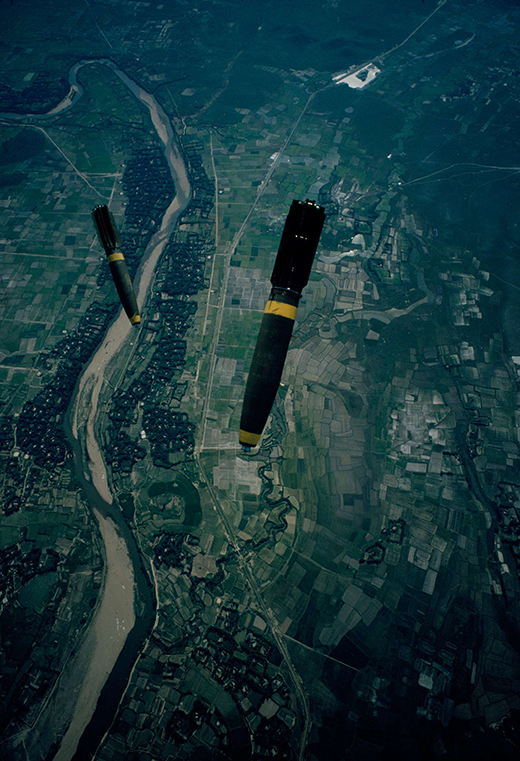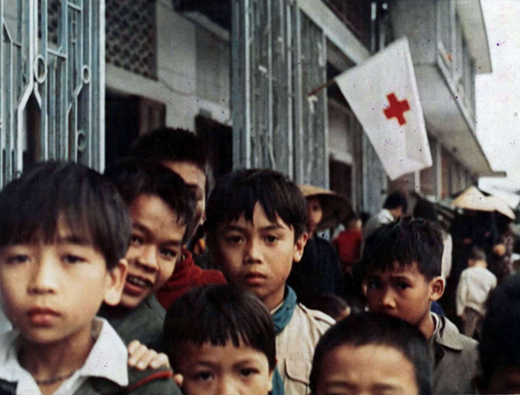Produced for K-12 educators, Teach This Poem features one poem a week from our online poetry collection, accompanied by interdisciplinary resources and activities designed to help teachers quickly and easily bring poetry into the classroom. The series is curated by our Educator in Residence, Dr. Madeleine Fuchs Holzer, and is available for free via email.

Photograph 428-K-33354; 9/16/1966; General Color Photographic File of the Department of Navy, 1958–1981; General Records of the Department of the Navy, Record Group 428; National Archives at College Park, College Park, MD.

Photograph 111-CC-81726; Vietnamese Children Outside the Viet Huong Refugee Center; 4/1972; Color Photographs of Signal Corps Activity, 1944–1981; Records of the Office of the Chief Signal Officer, Record Group 111; National Archives at College Park, College Park, MD.
- Ask your students to make a circle with their thumb and forefinger. They should look through the opening to focus on something close to them, then on something far away. Ask them to write down the details they notice in both the close-up and far-away views. What is the difference between the two?
- Introduce the idea of perspective (that the vantage point from which you look at something influences what you see). Show your class the image from the National Archives of bombs falling and ask them to write down the details they notice (not their interpretations, but what they actually see). Do the same with the image of the Vietnamese children. Ask your students to gather in small groups to share their thoughts and observations about the photographs’ different perspectives.
- Whole-class discussion: From what perspective do your students think the photograph of the bombs was taken, and what details in the photograph support this? What about the photograph of the Vietnamese children? What can your students learn from the focus of each of the photographs? How does each perspective make them feel?
- Project the poem “Facing It” in front of the class. Ask your students to read it silently and write down the words and phrases that jump out at them. Ask one student to read the poem aloud to the class, while the listening students write down words and phrases they have not noticed before that they think are important. Repeat this process with a second student reading aloud. Ask your students to get back in their small groups to share what they noticed and why they thought it might be important in the poem.
- Whole-class discussion: From what perspective is the speaker in the poem experiencing the Vietnam War Memorial, and what details in the poem suggest this? What is the speaker’s perspective on the Vietnam War itself? What details in the poem support this interpretation? (At this point you might want to share more information about the poet, Yusef Komunyakaa.)
